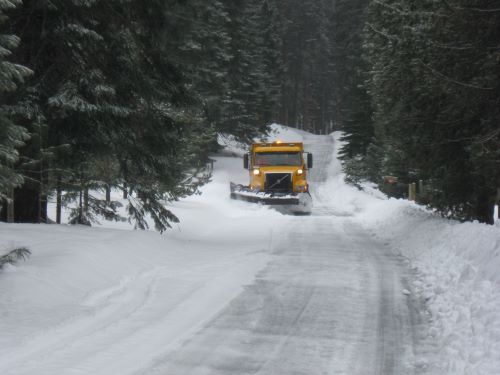GPS Winter Use Warning
Roads
We are once again urging travelers to not blindly follow their GPS devices/mapping apps to navigate around road closures in winter storms.
When driving conditions deteriorate, there are times when roadways may be closed for safety purposes. And when this happens along Interstate 5 in our Southern Oregon area, many drivers will blindly follow their GPS device/map app as it diverts them onto high mountain routes only to get stuck and require assistance.
Many motorists, including semi-trucks which are prohibited under winter conditions, will divert onto roads like Dead Indian Memorial Road; a remote, steep, narrow road that is 1000’ higher in elevation than Siskiyou Pass and is far more difficult to drive than I-5. Most of these motorists are unprepared for the driving conditions and do not install chains - the natural result is multiple vehicles getting stuck, crashing, or sliding off the road requiring assistance. Diverting from major highways to rural, remote county roads during a winter storm in hopes that you can 'make it' is not a wise decision.
Other challenging incidents have occurred when vehicles diverted from Interstate 5 have ventured onto Colestine Road headed toward California and have spent most of the night waiting for Jackson County Search and Rescue and County Road Department employees to rescue them. Colestine Road is a narrow, very steep, gravel road that is unmaintained during evening hours . The route is signed as not being maintained after dark in the winter, yet drivers continue to use this route as a bypass in bad weather. It isn't a bypass - don't trust your GPS!
Another commonly attempted 'bypass' is Tiller Trail Highway 227 which heads north of Shady Cove toward Roseburg. Again, this is a narrow, steep roadway which is not intended as a bypass during weather closures of other area highways.
In summary, just because your mapping app says the road is open does not mean it is a wise decision to travel that way. Remember, the farther off the normally travelled routes you get, the farther away from help you get. Therefore, only travel in these areas if you have the necessary skills, vehicle and equipment to navigate these roadways and are fully prepared with emergency supplies for both your car and you; tire chains, flashlights, warm clothes, blankets, water, food, etc.




